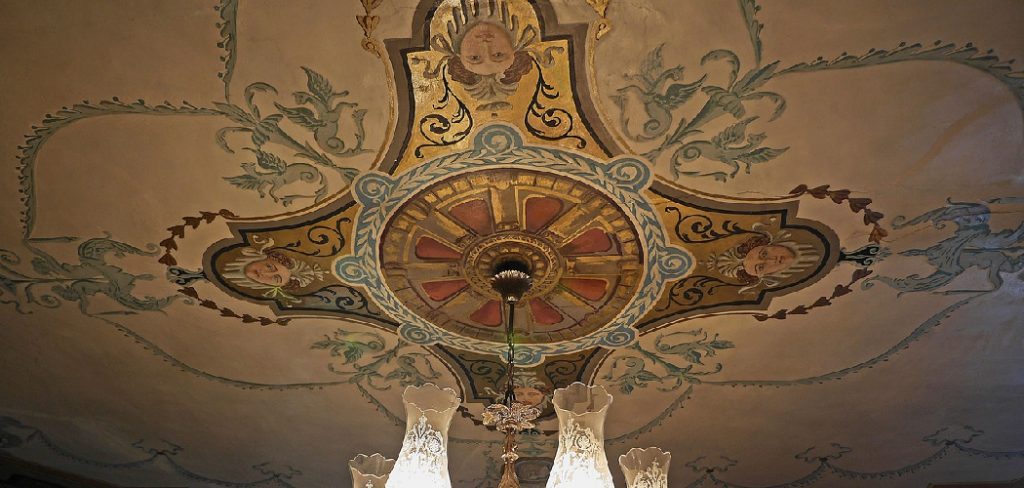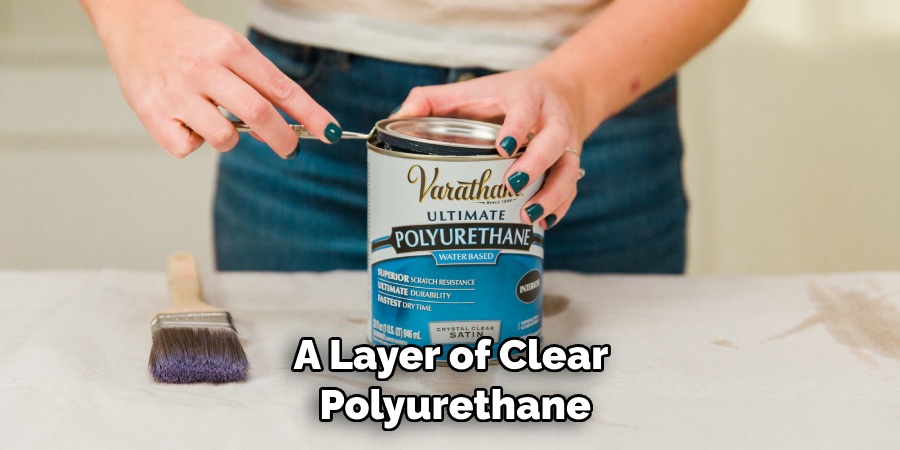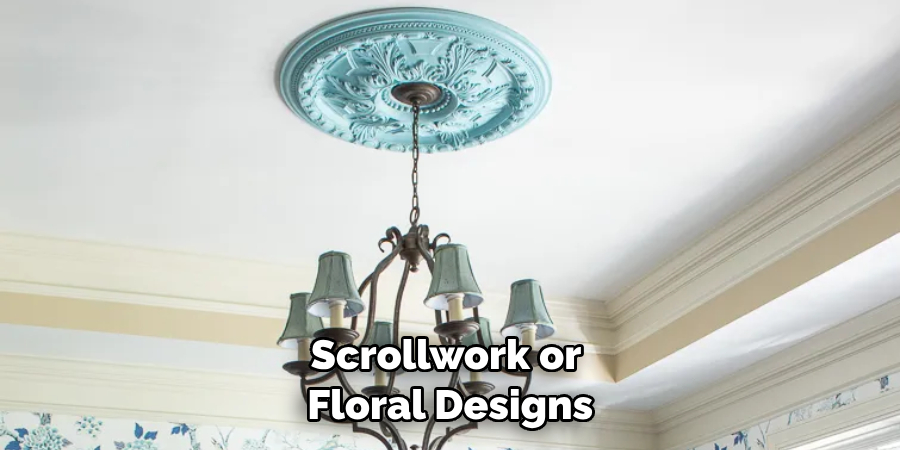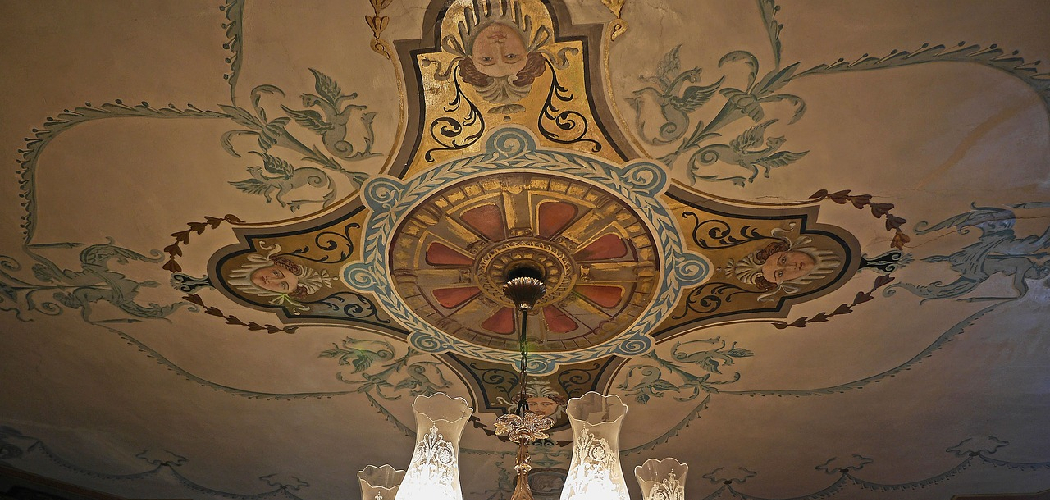Are you interested in adding a beautiful touch of art and elegance to your ceiling, but don’t know where to start? Painting a ceiling medallion is a great way to make any room look luxurious and eye-catching. With just some simple tools and supplies, you can easily learn how to paint a ceiling medallion! Keep reading for all the tips and tricks for creating your own masterpiece.

If you’ve ever thought about adding a bit of sophistication and elegance to your home, consider painting a ceiling medallion. Not only does it make space more visually appealing; it also gives any room in the house that extra level of charm.
But with all the different color options, materials, installation techniques and even the various shapes available – just how do you go about creating this beautiful addition? In today’s blog post, we’ll walk through everything from choosing paint colors to successfully installing your new ceiling medallion!
Why May You Want to Paint a Ceiling Medallion?
1. To Add a Beautiful Touch of Art and Elegance to Your Ceiling
One of the most compelling reasons to paint a ceiling medallion is the aesthetic benefit. Ceiling medallions are ornate pieces of art that can add an air of luxury and sophistication to any room. They come in a variety of shapes and sizes, often reflecting the architectural styles of specific eras. Painting them yourself allows you to customize your own unique look that will complement your existing décor.
2. To Refresh and Update a Room Without Making Major Changes
Painting a ceiling medallion is an easy way to quickly transform the look of a room without undertaking any major renovations. Whether you’re looking for something more traditional or want to go for something trendy and modern, painting allows you to make the changes you desire without breaking the bank.
3. To Save Money and Time
Painting a ceiling medallion yourself is an inexpensive and relatively quick way to update any room. When compared to buying a new one or having one custom-made, painting it yourself can save time and money. It’s also much easier to do than replacing the ceiling medallion.
Now, on to the steps for how to paint a ceiling medallion.
Begin with choosing the right color and finish that will coordinate well with your room’s décor. Depending on the look you want to achieve, pick an appropriate shade of either latex or oil-based paint.
How to Paint a Ceiling Medallion in 5 Easy Steps
Step 1: Gather All The Materials You Need
The very first step is to gather all the materials and tools you need for painting a ceiling medallion. You will require some basic painting supplies such as paint, brushes, rollers, drop cloths, painter’s tape, etc. Additionally, if your medallion is made from metal or plastic you may need special primers and sealants for those materials.
Step 2: Prep The Area
Prepare the area around the medallion by covering furniture, floors, and other surfaces with drop cloths. You also need to tape off anything you don’t want to be painted. Make sure to use painter’s tape on any edges or corners that meet the wall as well.

Step 3: Clean The Surface
Using a mild detergent and warm water, clean the surface of the medallion to remove any dust, dirt or debris. Let it dry completely before proceeding any further. This will ensure a smooth and even finish when you paint.
Step 4: Apply The Primer
Apply a good-quality primer to the medallion, following the manufacturer’s instructions. You may need to use multiple coats of primer depending on the material your medallion is made from. Allow the primer to dry completely before moving on to the next step.
Step 5: Paint
Once the primer is dry, you can begin painting the medallion. Choose a paint color that complements your room’s décor and apply it to the medallion in even strokes. Depending on the type of paint used, multiple coats may be needed for full coverage. When finished, allow it to dry completely before enjoying your newly painted ceiling medallion.

Following these five steps will ensure that you get the best results when painting a ceiling medallion. With a little bit of patience and effort, you can give your room an extra special touch with a beautiful and unique focal point. Good luck!
Some Tips to Paint a Ceiling Medallion
1. Do Not Paint Over the Ceiling Medallion’s Design
While it may be tempting to paint right over the medallion’s design, this could lead to an uneven finish. Instead, take the time to prep the surface of your medallion by lightly sanding and wiping away any dust particles.
2. Prime First
For best results, apply a coat of primer to the surface of your medallion before painting. This will help ensure that your paint adheres properly and create a smooth finish.
3. Use Latex Paint
Latex paints are ideal for painting ceilings because they are water-based and can be easily cleaned up with water, making them less messy than oil-based paints.
4. Try a Spray Paint
If you’re looking for an easy paint job, try using spray paint on your ceiling medallion. It will provide a smooth finish without the need to brush or roll it on. Just be sure to use light coats and allow plenty of time for drying between coats.
5. Seal the Paint
After you’ve finished painting your medallion, seal it with a layer of clear polyurethane. This will help protect the paint from chipping and fading over time. Also, keep in mind that if you are using multiple colors on your medallion, you should seal each color separately.

6. Add Gilding
For a truly luxurious finish, consider gilding your ceiling medallion with real gold or silver leaf. This is a great way to add extra shine and sparkle to your medallion and will make it stand out from the rest.
Follow these steps and you’ll soon have a beautiful, vibrant ceiling medallion that will become the focal point of any room!
Frequently Asked Questions
What Precautions Should I Take When Painting a Ceiling Medallion?
When painting a ceiling medallion, it’s important to wear protective eyewear and gloves to avoid getting paint or chemicals in your eyes. Additionally, use drop cloths or tarps around the area to protect furniture and flooring from splatter. To ensure that the paint adheres properly, make sure the medallion is clean and dry before painting. If needed, lightly sand down any rough spots or blemishes on the surface.
What Kind of Paint Should I Use to Paint a Ceiling Medallion?
Latex paint is best for a ceiling medallion as it will provide the most even coverage. Choose either a semi-gloss or gloss paint to create a reflective shine. Acrylic paints are also an option but they may take several coats to evenly cover the surface. Choose between flat, eggshell, or satin for a more muted look.
How Can I Make My Ceiling Medallion More Eye-Catching?
If you’re looking to make your ceiling medallion stand out, try using metallic or pearlescent paint. These paints will give the medallion a shimmering finish that catches the light and is sure to create an eye-catching focal point in any room. Additionally, you can use stencils or freehand painting techniques to add intricate designs and patterns onto the surface. Finally, adding a few coats of clear sealant or gloss will help protect the paint and give your medallion a more polished look.
How Long Should I Wait Before Hanging the Ceiling Medallion?
It’s best to wait at least 24 hours after painting before hanging the medallion. This will give the paint time to fully dry and adhere to the surface. Additionally, it’s important to wait until all of the paint fumes have had a chance to dissipate before hanging the medallion in an enclosed space.
What Are Some Common Ceiling Medallion Designs?
Common ceiling medallion designs range from plain circles or ovals to ornate patterns with scrollwork or floral designs. Other popular styles include geometric shapes like diamonds, hexagons, or stars and sunbursts. Many medallions feature intricate detailing such as leaves, vines, or animal figures. Honeycomb patterns are also a classic option that adds an interesting texture to the ceiling.

What Materials Are Ceiling Medallions Made Of?
Ceiling medallions are typically made from lightweight materials such as wood, metal, plastic, or composite. Wood is the traditional material for these types of decorative pieces and can be found in a variety of finishes from dark to light stains. Metal medallions tend to be more expensive but offer a wide range of colors and designs.
Conclusion
Now you know how to paint a ceiling medallion! Painting a ceiling medallion can be a daunting project, but it doesn’t have to be. With the right tools and instructions, you can achieve a professional-looking finish to your room’s design centerpiece – a uniquely shaped, eye-catching ceiling medallion.
Remember that cleaning and prepping are equally as important as applying the paint, so make sure you take extra care in those areas! With patience and practice, your ceiling medallion will look like it was hung by an interior designer. So get creative, have fun with color and don’t let the unknown stop you from achieving something beautiful.
